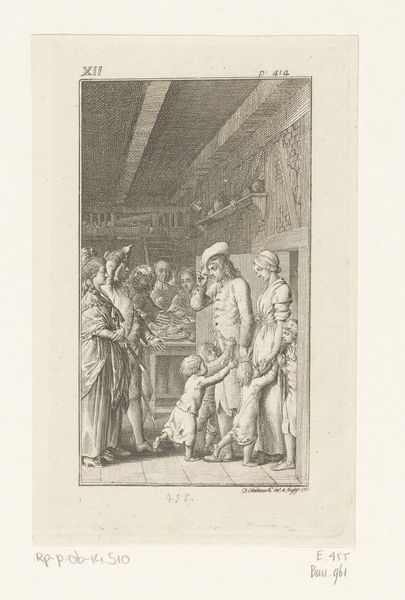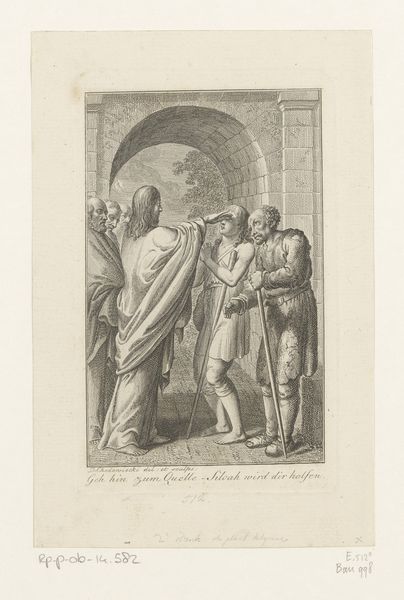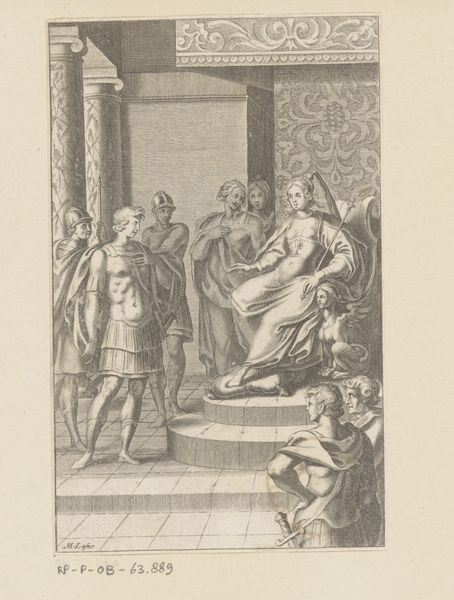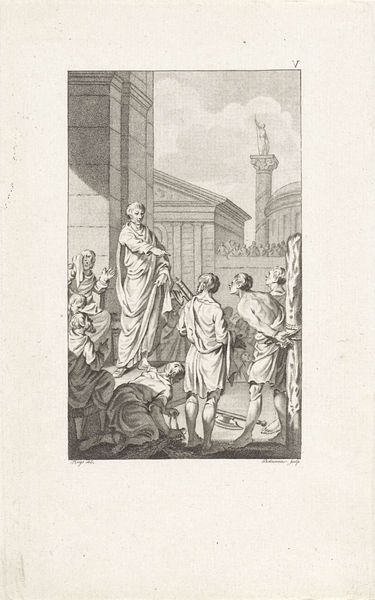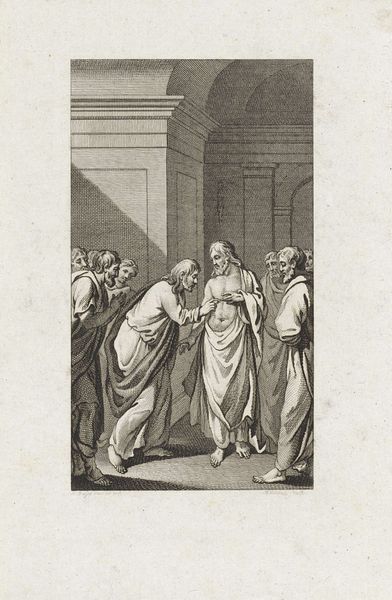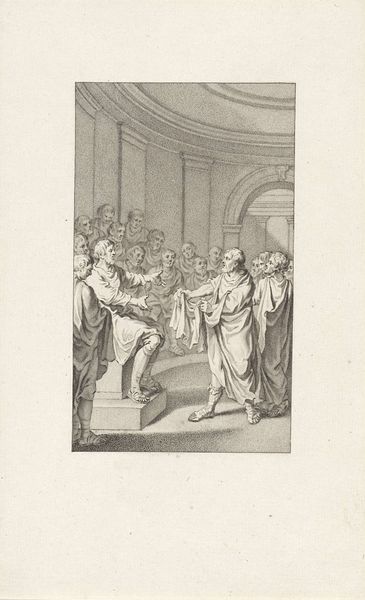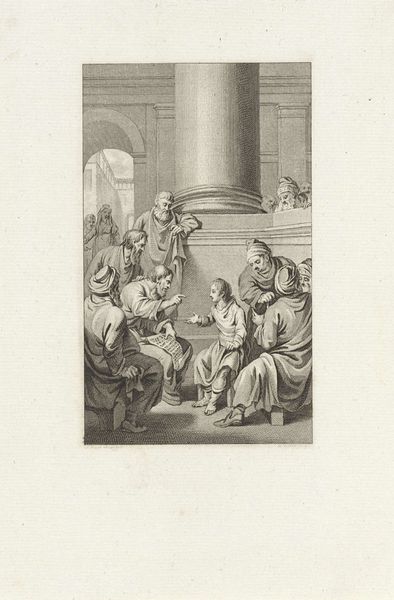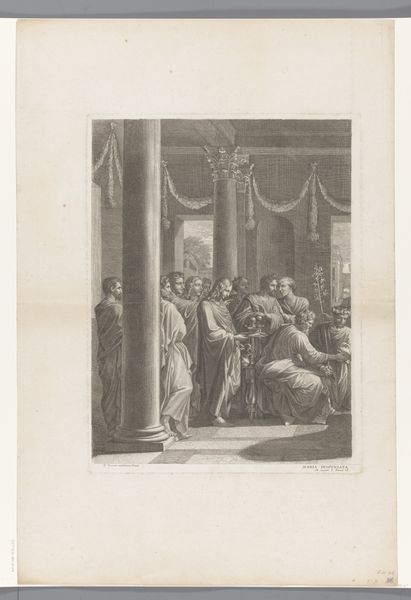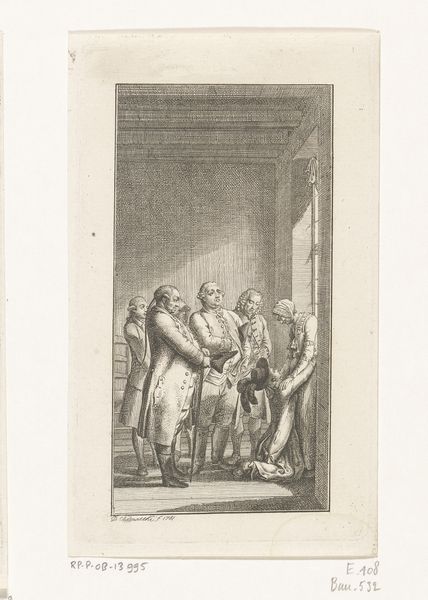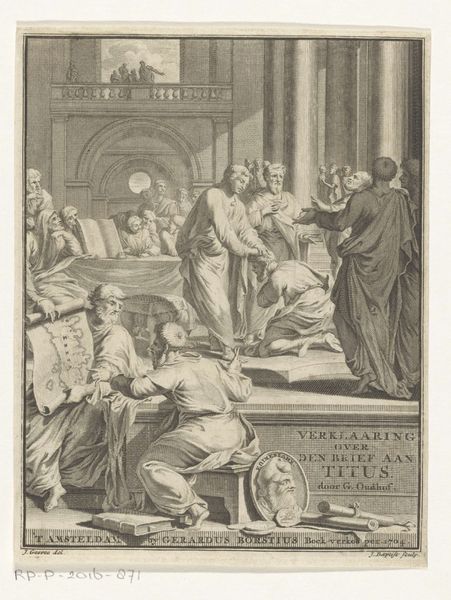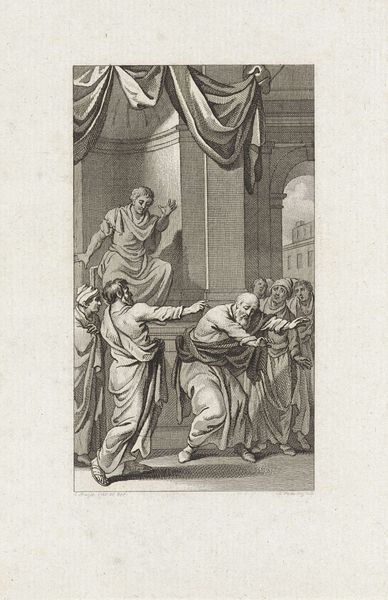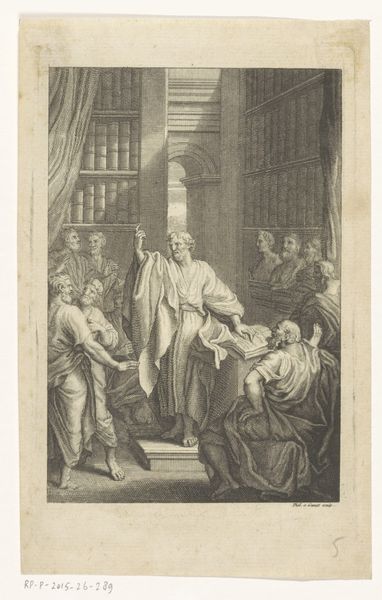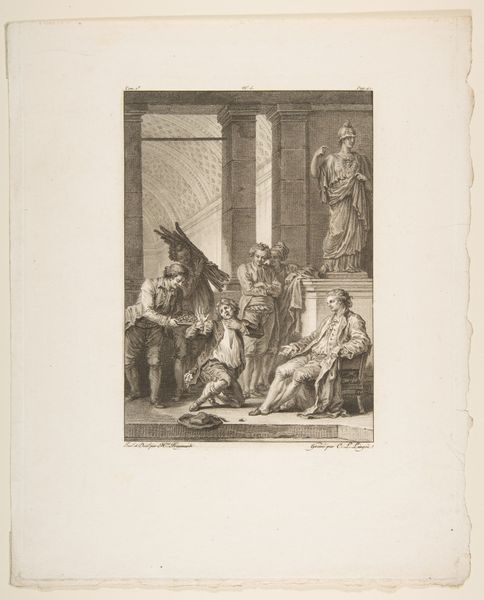
Raadsheer Teding van Berkhout waarschuwt Johan van Oldenbarnevelt dat men hem gevangen zal nemen, 1618 1787
0:00
0:00
Dimensions: height 189 mm, width 119 mm
Copyright: Rijks Museum: Open Domain
Editor: We’re looking at “Raadsheer Teding van Berkhout waarschuwt Johan van Oldenbarnevelt dat men hem gevangen zal nemen, 1618,” a print made in 1787 by Reinier Vinkeles, housed here at the Rijksmuseum. It has an old engraving style with precise linework. There's a clear story being told through the figures and setting. How do you interpret this work in its historical context? Curator: Given its creation nearly two centuries after the depicted event, it functions as a powerful piece of historical myth-making. It shows a scene from 1618 where Johan van Oldenbarnevelt is being warned of his impending arrest. What kind of power dynamics are immediately apparent to you? Editor: I see it. Oldenbarnevelt is seated, seemingly powerless, being warned by figures who appear apprehensive themselves. Their body language screams caution. Curator: Exactly. And remember, Oldenbarnevelt was a key figure in the Dutch Revolt. This print, produced much later, taps into a sense of national identity and the potential for internal betrayal. It also idealizes figures like Teding van Berkhout, casting them as brave defenders of justice. But this image of the past also served specific purposes in late 18th-century Dutch society. Think about what issues might resonate in that later time. Editor: I see it now; it’s a dramatized retelling of history designed to reinforce certain political ideals for a later generation. I was initially caught up in the narrative, but I can also recognize how this image has its own 18th-century agenda. Curator: Precisely. The power lies not just in depicting history, but in how that history is presented and consumed within a particular social and political climate. By recognizing these contexts we see a far more layered and complex image.
Comments
No comments
Be the first to comment and join the conversation on the ultimate creative platform.
